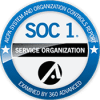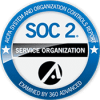The healthcare landscape is transforming, and at its heart lies a crucial evolution: the integration of Medicare and Medicaid services. For millions of Americans who qualify for both programs, this integration represents more than just administrative efficiency—it’s about creating a healthcare experience that truly serves their needs.
Page Content
Understanding the Human Side of Dual Eligibility
Meet Sarah, a 68-year-old retiree managing diabetes and mobility issues. Like millions of other Americans, she qualifies for both Medicare and Medicaid. Her story illustrates why integration of these programs matters. Without integration, people like Sarah face significant challenges that hinder effective care delivery and quality outcomes: juggling multiple insurance cards, coordinating care between doctors who rarely communicate, and navigating an endless maze of paperwork. Each step adds complexity to the individual’s care journey, creating barriers that often delay treatment or leave them feeling overwhelmed.
This complexity isn’t just inconvenient—it can significantly impact health outcomes. For individuals like Sarah, gaps in communication between providers and payers can lead to redundant tests, missed diagnoses, or inadequate follow-up care. These inefficiencies are why advancing Medicare and Medicaid integration is so critical. By creating a more unified system, healthcare organizations can ensure that dual-eligible individuals like Sarah receive the seamless, person-centered care they deserve, ultimately improving their health and quality of life.
CMS and the Case for Alignment
The Centers for Medicare & Medicaid Services (CMS) recognizes that dual-eligible individuals, such as Sarah—a hypothetical example representing millions—often face complex health challenges alongside administrative hurdles as they navigate a fragmented healthcare system. For Sarah, who may be managing multiple chronic conditions, behavioral health needs, and social challenges like housing instability or food insecurity, these systemic inefficiencies can lead to gaps in care, delays in treatment, and poor health outcomes.
CMS has emphasized the pressing need for greater alignment between Medicare and Medicaid to address these challenges. By streamlining services, improving data sharing, and fostering coordination across programs, integration can help individuals like Sarah access seamless, person-centered care that addresses their full range of needs. This shift also highlights the demand for innovative healthcare technology that can help organizations break down silos, improve efficiency, and deliver better health outcomes.
Innovation Driving Change
Dual-eligible individuals represent a population with greater health needs and disproportionately high healthcare costs. The Kaiser Family Foundation (KFF) reports that this group accounts for a significant share of both Medicare and Medicaid spending, underscoring the need for innovative approaches to their care. This requires sophisticated technology solutions that can handle complex cases, streamline processes, and reduce administrative burden—all without compromising quality.
InfoMC’s Incedo Care Management System offers a comprehensive suite of tools designed to help healthcare organizations address the challenges of dual-eligible care. By providing a unified platform that bridges Medicare and Medicaid, Incedo ensures that no patient falls through the cracks.
Incedo offers:
- Flexible platform capabilities that support Medicare and Medicaid programs individually to complement existing systems or together as a single, integrated solution, ensuring adaptability to organizational needs.
- Comprehensive care management tools that align care across medical, behavioral, and social services to reduce fragmentation and improve outcomes.
- Advanced analytics capabilities that help identify high-risk patients, predict potential care gaps, and target intervention opportunities with data-driven insights.
- Streamlined workflow management that simplifies administrative processes to reduce burden and ensure timely care delivery.
- Care coordination tools that facilitate collaboration between care teams for cohesive, patient-centered care.
State-Level Success Stories
States are leading the way in integration innovation. The Integrated Care Resource Center highlights numerous successful models that showcase how technology-enabled care management transforms service delivery. InfoMC supports these efforts by providing solutions that help organizations implement integrated care models effectively. This ensures that the benefits of integration—better patient care, reduced costs, and improved outcomes—become a reality.
The Technology Advantage
The Office of the National Coordinator for Health Information Technology (ONC) emphasizes the critical role of technology in advancing Medicare and Medicaid integration. InfoMC’s platform aligns with national healthcare priorities for dual-eligible populations by providing:
Unified Program Management: Manage Medicaid and Medicare programs together on a single platform, streamlining operations and enabling more coordinated, efficient care delivery.
Care Coordination Excellence: Facilitate effective collaboration, information sharing and coordination of interventions across the care continuum.
Compliance and Quality: Support regulatory requirements while tracking quality metrics to drive continuous improvement.
This alignment ensures that organizations not only meet today’s challenges but are also equipped to navigate future industry shifts. By bridging gaps, breaking silos, and fostering a culture of collaboration, InfoMC’s platform facilitates the integration of care for dual-eligible populations, enabling more effective and efficient service delivery.
The Path Forward
For organizations serving dual-eligible populations, integration is a journey—and having the right partner makes all the difference. InfoMC’s solutions lay the foundation for successful integration initiatives, enabling better care coordination, reducing administrative burdens, and ultimately improving outcomes for patients. With tailored support that includes business process services, staff augmentation, and consulting, we’re equipped to meet the unique challenges of Medicare and Medicaid integration. Our modern, flexible technology platform and deep expertise help organizations like yours navigate this complexity and achieve meaningful, lasting change.
As we continue to bridge the gap between Medicare and Medicaid, we’re not just improving systems—we’re improving lives. For people like Sarah, that means fewer barriers, improved access to care, and the ability to focus on what matters most: living a healthier, more fulfilling life.
Ready to Transform Your Integration Efforts?
InfoMC’s healthcare management solutions can help your organization navigate the complexities of Medicare and Medicaid integration while improving care delivery and patient outcomes. Contact us to learn how our technology and services can support your integration initiatives and help you better serve your dual-eligible population.
Sources:
Note: For the most current information and specific program details, please consult CMS.gov and your state’s Medicaid agency.








